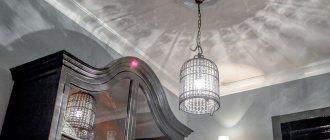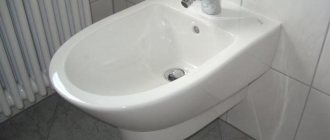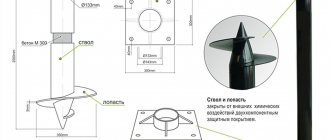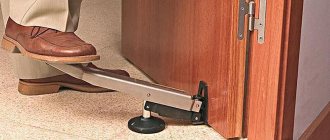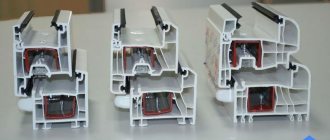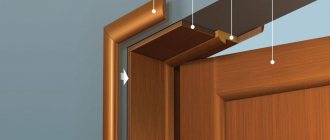assets/from_origin/upload/resize_cache/iblock/41d/600_450_2/41d3be2d479f9e77109b190aa97226af.jpg From this article you will learn:
- What types of bidets are there?
- How to install a bidet correctly
- How to install a floor bidet
- How to install a hanging bidet with installation
- How to install an electronic bidet
- What can replace a bidet?
Bidet is a very useful plumbing equipment that significantly increases the level of comfort in your home. You simply cannot do without such a device if someone in your family is experiencing health problems. The lack of such equipment is sometimes justified by a lack of finances or free space, but modern manufacturers offer various plumbing options suitable for bathrooms and bathrooms of any size. Moreover, installing a bidet is not a very complicated procedure. After familiarizing yourself with the features of installation work that are described in our article, you can easily cope with this task.
A little history about the bidet
It is impossible to say exactly when and where the bidet appeared. According to some researchers, the first mention of such a device was found in Italy. According to other sources, the invention of the bidet belongs to the court furniture makers of France. It is believed that the first examples of such equipment were located in the boudoirs of noble ladies, but there are also opinions according to which such devices were used by women in brothels.
Not only in Europe you can find references to the bidet in ancient times. The Arabs believe that it was they who first began to use this convenient invention. And proof of this fact can be the results of excavations by archaeologists, during which the remains of ancient dwellings with separate compact rooms were discovered, where bowls were built into the floor. These bowls can be considered the prototypes of modern bidets.
At the beginning of the twentieth century, the bidet ceased to be part of the interior of the boudoir or bedroom. Since that time, such a device has migrated to the bathroom. Another 80 years later, thanks to the development of technology, electronic devices began to be produced in Japan. Many consumers are familiar with a bidet as a bowl that resembles a toilet, to which a faucet is attached. Such examples of models of this equipment are quite widespread in our time.
In countries that were formerly part of the Soviet Union, bidets are not found in bathrooms as often as in Turkey, Italy, France, Spain or Greece.
Particular attention is paid to personal hygiene in Muslim countries. Here this is not only a personal matter, but also part of the issues from the religious sphere. There is often no toilet paper in the bathrooms of countries such as the UAE, Kuwait, Iraq, and Saudi Arabia. Its functions are performed by a bidet.
It may seem strange that in developed North America this equipment is not as common in bathrooms as in the countries of the southern neighbors of the United States.
Japan is considered the real leader in the level of bidet use. Many residents of the Land of the Rising Sun cannot imagine daily life without this plumbing equipment. As in other areas, the Japanese strive to use the latest technological developments in the production process. Electronic bidets are a common thing for them.
Need for additional plumbing
Previously, plumbing was the same for everyone, it had its own clear place in the room and could not leave it. However, now even in apartments, not to mention large private houses, they make a couple of bathrooms, expand these rooms, and install a bidet in addition to the toilet. This is hygiene, health, plus an attractive interior element for the bathroom.
Actually, not only personal hygiene, the desire of a person to maintain cleanliness has led to a real boom in the bidet market. Also, installing a bidet is due to the fact that with its help, water is used rationally, time is saved, and the need to take a shower is eliminated. That is, the bidet significantly helps in life, in maintaining the modern fast pace.
Caring parents, through the use of additional plumbing fixtures, help their children from an early age develop an understanding of what personal hygiene means, how important it is to observe it, and what role it plays in life.
Which bidet to choose for installation
A bidet is a modern sanitary equipment that is designed to solve personal hygiene issues. The appearance of such a device resembles a standard toilet. Technically, the equipment is similar to a low-mounted washbasin. Its drain is connected to the sewer. For hygiene procedures, the bidet is equipped with a mixer or fountain.
Depending on the installation method, there are floor-standing and hanging models.
When choosing a bidet, you need to pay attention not only to the installation option, but also to other characteristics of the equipment. Different models can be equipped with a regular, two-valve and single-lever mixer, as well as a ball mechanism (this option is considered the most convenient).
The design of the mixer spout installed on the hygienic device allows you to direct the stream upward at the desired angle. Some models don't have it at all. In this case, a fountain of water comes from the bottom of the bowl. The direction of the fountain jet can be adjusted in the desired direction. The appearance of the bowl and its design are selected based on the interior design of the bathroom.
In the manufacturers' catalogs you can find modern models of devices made in different designs - from retro products to trendy high-tech plumbing fixtures. It is worth paying attention to the size of the bowl, especially if you are choosing plumbing fixtures for a compact bathroom. It is necessary to ensure that the bidet has easy access and is convenient to use.
The most compact option is a bidet with a hanging bowl, but to install such plumbing fixtures you will need to install an installation. This support system is placed in a specially prepared niche behind the main element and can be covered with a false panel. To avoid mistakes with choosing the size of the bowl, you should use a tape measure to measure the space where you plan to install the bidet.
When choosing plumbing fixtures of this type, you need to analyze a number of parameters and characteristics.
Recommended articles on this topic:
- Arrangement of a small apartment
- Stages of renovation in an apartment
- Turnkey cosmetic repairs
As noted above, first of all you need to decide on the size of the bowl. If the dimensions of the room do not allow the installation of a separate device, you can choose universal models called shower toilets.
After choosing a product by size, pay attention to the material from which the equipment is made. The plumbing market offers bidet models made from the following materials:
- steel;
- glass;
- plastic;
- cast iron;
- silver;
- gold;
- faience;
- porcelain.
The most common are porcelain and earthenware products. Models of the first type will cost much more than earthenware ones, which is due to the peculiarities of production technology. At the same time, in terms of quality characteristics, earthenware bidets are only slightly inferior to porcelain ones (in terms of strength and durability).
It is quite difficult to distinguish models made from these materials by their appearance, especially if they are covered with high-quality glaze.
The main differences between products made from such materials are porosity or hygroscopicity. Porcelain equipment is more resistant to the formation of rust stains on the surface of the bowl and the appearance of an unpleasant odor. Earthenware plumbing fixtures can last up to 35 years, and porcelain products are designed to last more than 55 years. Saving money when purchasing earthenware bidets will be reflected in more complex plumbing maintenance. With porcelain equipment such problems will not arise. When choosing a product, you must pay attention to the absence of cracks, chips or other defects on the surface of the bowl.
Types of faucets
Here everything is determined by the type of filling of the bowl: for models with external filling, any type of mixer is suitable, bowls with internal filling require the installation of a special tap.
To choose the right mixer, you need to consider several parameters.
Control type. Valve ones are old, but the most reliable due to their simplicity of design. Single-lever faucets regulate the water flow smoothly and quickly.
The most hygienic and convenient is a touchless faucet. It is equipped with a photo sensor that reacts to hand movements and turns on the water. The temperature is set in advance, it runs on a lithium battery.
The material determines the service life of the mixer and its type. Faucets made of bronze and brass are in demand. Products made from silumin and ceramics will last less, but will cost the client less.
General tips for installing a bidet yourself
Connecting a bidet to the sewer system is not a very complicated process. You can do it yourself without any special skills. Here are step-by-step instructions to help you install the bidet correctly.
Before proceeding with the installation of equipment, it is necessary to accurately determine its location. Pay attention to the dimensions of the plumbing fixture and the distance to the points of connection to the water supply and sewerage. To perform installation correctly, free access to the pipes is necessary.
To install a bidet yourself, you will need silicone, mounting tape, tow, as well as plumbing tools - a pipe wrench, a hammer drill, a set of drills, open-end wrenches and a screwdriver.
During the installation process, you should strictly follow the instructions provided in the manufacturer's instructions, which are usually supplied with the product. In such a document you can also find a detailed diagram of connecting the bidet to communication systems.
Standard models of hygienic devices are connected to the water supply network and sewer riser in the same way as conventional sinks. Almost all types of such plumbing provide for the installation of automatic drain valves and there is no connection to a siphon.
To install a floor-mounted bidet, special fasteners for toilets are used. They are connected to the sewer system with a flexible tube and a shaped element. In models that are equipped with faucets, these devices are installed last before connecting to the water pipe.
Price
According to consumer reviews and expert opinion, the following bidet siphons have proven themselves to be the best:
- plastic white model Viega - 360-365 rubles;
- Czech chrome model Alсаlast — 600-650 rubles;
- Swedish model Geberit - 650-700 rubles;
- German chrome model Kludi - 900-950 rubles;
- brass model Viega - 930-950 rubles;
- German chrome model Hansgrohe (Axor) - 1500 rubles;
- Italian model Migliore Riсambi - about 3 thousand rubles;
- Italian chrome model Vandini - about 2800-2900 rubles;
- Italian model Bugnatese - about 4 thousand rubles;
- German Grohe - about 1700-1800 rubles.
Turkish models are very well adapted for working in Russian conditions, which are represented by a drain pipe and rigid pipes, are chrome-plated with an anti-corrosion layer and are suitable for height adjustment within 140 mm.
Features of installing a floor bidet
Floor-standing bidet models have a number of advantages:
- Possibility of hidden connection to communications. After installing such equipment, pipes and taps remain invisible, so the bathroom interior will look more attractive. All connection points of such models are easily hidden due to the tight fit of the device to the wall.
- Floor-standing plumbing allows you to rationally use the space of the bathroom. The shape of the bowl in this case will be more compact and therefore takes up less space.
- Simple installation is another advantage of a floor-standing bidet. It includes only two components, which, following the instructions, can be easily installed, even without professional skills.
As additional advantages, it is worth noting the reliability of the design, silent operation and easy maintenance.
The most significant disadvantage of floor-mounted bidets is their high cost. Such models will cost much more than hanging products.
Before you begin installing a new bidet, you should carefully check the package contents and make sure the product is intact. There should be no chips or other defects on the surface of the bowl. To perform installation work and connect plumbing, you must prepare the following tools:
- drill;
- drills for concrete and ceramics;
- set of open-end wrenches;
- adjustable wrench;
- sealants for threaded connections;
- silicone sealing compounds for connections operating in high humidity conditions.
After the tools and materials are prepared, you need to determine the location of the bidet. To do this, you will need to accurately measure the distance from the bowl to the connection points to the water supply and sewer system. The bidet should be installed on the base and the locations of the fasteners should be marked. At the marked points you need to drill holes with a diameter corresponding to the size of the plastic dowels.
If the equipment is installed on a ceramic tile floor, then it is recommended to use a special pen drill to make holes. Dowels should be installed in the resulting holes, and the bowl should be placed on top and secured with fastening bolts. To avoid damaging the protective coating of the bowl, use special rubber gaskets.
When tightening the bolts, the force must be calculated correctly so that the ceramic does not crack. At the same time, not tightening it tightly enough will result in the bowl not being very stable. To strengthen the fixation of the plumbing fixture to the floor, you need to use silicone sealant. This mixture is applied to the gap between the bowl and the floor.
When the bowl is secured, we proceed to installing the mixer. For different models, the mixer can be mounted on the side of the bowl or on the wall. Instructions for installing the mixer and all the necessary fasteners, as a rule, are also included in the plumbing kit. As noted above, you need to check the equipment when purchasing equipment.
To install a faucet on a wall, you usually need to do work on the surface near which the bidet will be located. The grooves should be arranged before installing the bowl so as not to damage the product. Along with the markings for fastening the bowl, you should also mark the installation location of the mixer on the wall.
A hole must be drilled at the marked points. Then you should carefully remove all construction debris and only then proceed to installing the bowl. Installing the faucet on the side of the bidet will be simpler, since the bowl already has mounting holes for it.
To install the faucet, a rubber gasket and a clamping nut are used, which should be carefully tightened using an adjustable wrench. When the mixer is installed, it is necessary to connect cold and hot water. In this case, you need to be careful not to confuse the pipes connected to the mixer.
Experts believe that ball mixers are best suited for bidets. But such products are usually used to complete modern models of plumbing fixtures. Bowls, made in retro style, are equipped with mixers with two valves.
The bidet mixer is connected to the water supply using a flexible hose in a metal braid. It is necessary to select the hoses according to their length so that they are not excessively long, as in this case unnecessary loops will form. At the same time, using a short line will result in the hoses being too tight, and this is an unacceptable mistake when connecting a hygienic device.
It is recommended to connect the bidet mixer to the water pipes using a shut-off valve. This will allow you to turn off the water supply to the device if necessary.
To connect flexible hoses to cold and hot water, you need to insert or install tees, in front of which shut-off valves are installed. If it becomes necessary to replace the faucet or perform other types of equipment repairs, you will not need to shut off the entire water supply system in the house.
The bidet is connected to the water supply using threaded connections. To avoid leakage, they should be well sealed using linen thread, FUM tape or other materials. Inexperienced workers make two mistakes at this stage: they use either very little or too much sealing material. The optimal amount will be if, after screwing the thread, the sealing material protrudes slightly outward.
After connecting to the water supply, the equipment must be connected to the sewerage system. It is imperative to install a siphon. To connect to the sewer system, you will need a rubber adapter sleeve and corrugation. The siphon is installed first on the rubber gasket. All modern bidet models have overflow protection. During installation, you must ensure the integrity of the product and the correctness of all connections.
After installing the siphon, a corrugation is mounted to it, the second end of which is connected to the sewer pipe. The connection is sealed with a rubber cuff. Once the installation of the hygiene device is complete, turn on the water and check the connections for leaks.
Bathroom safety
There is often high humidity in the bathroom, which increases the likelihood of injury when moving around such a room. The presence of large objects that are located close to each other further increases the risk of hitting them during a fall. When planning a bathroom, you need to take into account all the nuances to avoid injuries in the future.
Handrails for stability
For children and the elderly, it is recommended to install handrails, holding on to which it will be easier for them to lower or rise from the bathtub, enter and exit the shower stall. Place the support at waist level - about 1 m from the floor.
No thresholds
To make it easier for children and the elderly to enter and exit the bathroom, it is better if there is no threshold. The same applies to a shower stall with a drain. You can install a special bathtub model in which the side door opens and the person does not have to step over it.
Floor slipping
Even with careful washing, some of the water gets onto the floor covering, making it slippery and making movement dangerous. When tiling the floor, you should choose anti-slip ceramic tiles or a similar coating. Additionally, it is worth using special mats that do not slip on a wet surface. It is recommended to place them in the shower stall or at the bottom of the bathtub.
Step-by-step installation of a hanging bidet
Installation of a bidet with installation is carried out using the same technology that is used for other hanging plumbing fixtures. In this case, the connection diagram of the hygienic device will differ from floor-standing models. It includes the following steps:
- Installation of the installation system. First, you need to make a small recess in the wall on which the bowl will be attached. Its dimensions should be slightly smaller than the dimensions of the bowl. It is necessary to provide sewerage and water pipes to the installation site. Then the installation is assembled. This must be done strictly according to the instructions. After installing the installation on the floor and on the wall of the bathroom, it is necessary to mark the future fastening and drill holes for the nuts. Then we proceed to fix the installation. To close the niche where the metal support system is installed, plasterboard, special decorative panels and other materials are used.
- The next step involves attaching the bidet bowl. The provided mounting holes hold the pins that hold the bowl. These studs are attached to the back wall. The installation kit includes a special gasket to protect the product from damage. If there is no gasket included in the bidet kit, it can be replaced with silicone sealant. It is applied to the bowl fasteners, after which you need to wait until the sealant has completely dried and secure the bowl with nuts.
- When the bowl is fixed, you need to connect the bidet to the sewerage system and water supply. The device manufacturer's instructions are also useful here. The essence of the installation work is that you need to initially install the mixer. It is better to use a built-in mixer model. The outputs/inputs of the hygienic device are connected to communications using flexible hoses. You need to remember about the tightness of the connections. Special gaskets can be found in the equipment package. They are installed at the ends of the hoses.
As practice shows, the use of gaskets is not enough to avoid leaks during operation. You need to additionally wind FUM tape between the thread and the hose. This solution will ensure maximum connection tightness.
- The next stage is related to the installation of the siphon. It is connected to the bowl drain holes. Rubber rings must be installed between the plumbing fixtures and the siphon to ensure a tight seal when draining water. The outlet of the siphon must be inserted into the sewer outlet, which must first be brought to the installation. With this method of installing a siphon, it is always easy to replace the bowl or repair it without much difficulty.
Design, shape and color
The white classic remains a hit. If the room requires accents on an unusual color of plumbing, then you can find an accessory in the desired tone: pink, light green, blue, black, chocolate brown, gold-plated, orange, bright red.
Today, decorated models with patterns, drawings on the bottom of the device, external cladding with mosaics of the same color or colored ones are popular. For a classic style, pearl white remains the best color.
For Japanese-style interiors, round-shaped sanitary ware in black design is installed. Dark bidet colors are also used for the bathroom in trendy minimalism. Models in contrasting designs, for example, black and white, red top and white bottom, look original. For country-style rooms, semicircular bowls in a light tone, decorated with a delicate pattern, are suitable.
Installing an electronic bidet
Installing an electronic shower toilet is the same as installing a traditional toilet. The difference between this process is the need to connect to the electrical network.
Mandatory requirements for installing electronic bidet models:
- Grounding must be provided to prevent the occurrence of excess electrical current, which can be dangerous to humans.
- It is necessary to provide for the installation of a protective disconnection device from the network in case of power surges.
- It is necessary to provide a separate power supply branch.
The procedure for installing an electronic bidet depends on the type of bowl, which can be floor-mounted or wall-mounted.
The main stages of installing a wall-mounted or wall-mounted bidet with electronic control:
- First you need to prepare the place where the bowl will be installed. It is best if the installation is carried out to the wall in which the water pipes pass.
- If it is not possible to equip a niche, then you can make a plasterboard structure to replace it. For such work, exclusively moisture-resistant drywall is used.
- The installation frame for hanging models is attached to four points (two on the floor and two on the wall).
- Anchor bolts are used to secure the bowl.
- You can concrete the legs of the installation frame. To strengthen the frame of the metal support system, use special jumpers.
- Before carrying out installation work, experts recommend determining the optimal height for installing the hanging bowl, taking into account the height of all family members.
- After completing the installation of the hanging electronic bidet, do not forget to check the operation of the installation, after which you can begin plasterboarding or concreting.
- At the final stage of installation, special studs are installed to ensure the reliability of the structure.
Photos with successful layout examples
A modern bathroom is equipped with various household appliances, furniture and accessories. In order for them to harmonize with each other, you must adhere to the same style when choosing. You can create a project yourself or together with a designer.
Photos of successful bathroom layouts confirm that with the right approach, even a small room can be made cozy and practical.
Source
Typical bidet installation mistakes
- To operate effectively, the sewer system must have a certain pipe slope. It should be taken into account that when laying a pipe from the sewer riser to the installation site of the equipment, the angle of inclination of the section should be about 15° or from 3 to 5%. These requirements must be observed when rearranging all types of plumbing fixtures (sinks, toilets, bidets, showers, etc.). If you need to move the drain of any equipment from the riser to 2 meters, then it will have to be raised by 60–100 mm.
- To connect to the sewer riser, you need to provide convenient access to the siphon connection point to the sewer joint and the drainage point.
- Check for sewer slope when installing the bidet. The water should flow by gravity into the drain hole. The sewer system must be completely sealed.
- Incorrect adjustment of the mount may cause it to tilt to the side.
- Do not install the bidet on an uneven surface or fix the bowl loosely.
- Silicone sealants are used to seal the gap between the wall and the bowl of the hygienic device.
- At the points where the siphon connects to the drain or sewer, traces of leakage may appear. In this case, you need to check the integrity of the siphon and seal the joints with sealant.
Where can I buy?
As a rule, siphons intended for installing a bidet are represented by drain and overflow pipes connected to each other. The sale of such products is carried out by both construction and shopping centers and plumbing stores, as well as online platforms.
The first two options are more preferable, since the buyer has the opportunity to personally verify the quality of the product, check the availability of accompanying documentation and instructions, and also receive advice from a specialist consultant when choosing.
A hygienic shower is a sanitary device for personal hygiene that is becoming increasingly popular. Hygienic showers - read all about the pros and cons of such a system on the website.
You can read all about the pros and cons of instantaneous electric water heaters at this link.
You can read all about the benefits and harms of hot tubs for human health in this material.
What affects the distance
A sink more than 40 cm wide, a regular shower or shower stall, a toilet, a wall, a bathtub - all this should be placed no closer than 30 centimeters from the bidet. This is the minimum distance from the bidet provided for by any of the regulatory documents - GOST, SNiP 2.08.01-89 “Residential Buildings”, included in the state register of the Russian Federation, or ergonomics, which designers like to talk about.
Sanitary requirements are not very positive about the maximum distance of 1 meter, which is allowed in some instructions.
This is unhygienic and fraught with epidemiological consequences. But any plumber will tell you that with such arrangement of devices there is a risk of constantly cleaning the sewer bed between them, which will certainly become clogged. Installing a bidet and toilet creates certain conditions that should be taken into account:
The layout of the bathroom depends not only on the distance of 30 cm - 1 meter, which is required for the parallel arrangement of the bidet and toilet. In small rooms, it is allowed to install a bidet and toilet against a perpendicular wall. Typically, it is the floor-standing toilet that serves as the reference point for determining the location of the flushing device, but some variations are determined by the type of bidet.
